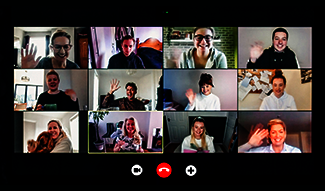
Most illegal drug users and abusers of alcohol hold full-time jobs.
That is the finding of a study released by the Substance Abuse and Mental Health Services Administration, a public health agency in the U.S. Department of Health and
|
Six Ways Substance Abusers Cost Employers |
|
A substance abuser employed by your organization can hurt the bottom line in many ways. 3. Stealing. About 40 percent of pilferage losses are linked to substance abusers. 4. Medical costs. Substance abusers use medical benefits (often paid for in whole or part by the employer) five times more than other employees. 5. Accidents. About 35 of every 100 workplace accidents involve substance abusing employees. Substance abusers are involved in workplace accidents at twice the rate of non-abusers. 6. Lawsuits and Workers Comp claims. Substance abuse related accidents lead to liability lawsuits and workers compensation claims. Increased claims raise the employer's Workers Comp premiums. |
Human Services. The study involved collecting data over a two-year period from 128,000 full-time employed individuals, ages 18 to 64. It also revealed that workers who use illicit drugs are less likely than nonusers to be employed by companies that have drug or alcohol testing policies and programs.
For purposes of the study, illicit drug use is defined as using one or more of the following substances during the past month: "marijuana/hashish, cocaine, heroin, hallucinogens, inhalants, or prescription psychotherapeutics used non-medically."
Heavy alcohol use is defined as "drinking five or more drinks on the same occasion on five or more days in the past 30 days."
Here are some highlights of the study:
- Gender - Male employees are more likely than females to report illicit drug use.
- Employer size and industry - The larger the organization, the lower the incidence of drug and alcohol use. In other words, more substance abusers work for small employers. The highest incidence of drug use was found in the food preparation industry, while the most heavy alcohol use was seen in the construction industry. (See the tables at the bottom of this article for a complete rundown of industries.)
- Education - Employees with a college education are not as apt to use illicit drugs than those who are less educated.
- Age - Younger employees are more likely to be drug users and drink heavily. The report found that 19 percent of employees age 18 to 25 used illicit drugs during the past month, compared with 10.3 percent of those age 26 to 34; 7 percent of those age 35 to 49; and 2.6 percent of those age 50 to 64.
- Testing - Among full-time employees surveyed, nearly 43 percent said tests for illicit drug or alcohol took place during the hiring process at their workplaces. Nearly 30 percent reported random drug testing. Perhaps not surprisingly, those reporting that they use drugs are less likely to be working for employers conducting random drug tests.
What's an Employer to Do?
There are several steps organizations can take to help protect themselves, including:
- Adopt a strongly worded policy prohibiting the illicit use of drugs in the workplace. The policy should also prohibit employees from reporting to work while under the influence of alcohol and/or illegally used drugs. Clearly communicate the policy to new hires and current employees.
- Consider initiating a drug testing program so that your organization doesn't hire substance abusers and so that current employees do not report to work impaired. But before going forward with drug testing, there are at least two considerations:
1. Cost versus benefits. Are you hiring many of your employees from a pool of applicants more likely than the general population to abuse drugs? Then testing final applicants could be cost effective. Do you suspect that some current employees are abusing drugs and that this behavior is negatively affecting job performance? Perhaps random drug testing might be worthwhile.
2. Stay in compliance. A drug testing program must be designed to comply with applicable laws, as well as collective bargaining agreements. Clear any drug testing program with an attorney. - Train supervisors to enforce the policy and detect behavior that could indicate poor on-the-job performance caused by drug abuse or by alcohol consumption. These can include tardiness, making repeated mistakes and being argumentative or uncooperative. Instruct supervisors to focus their efforts on the poor performance factors.
Worst and Best Industries
|
[NOTE: Information and guidance in this article is intended to provide accurate and general information on the subjects covered. It is not intended to provide a legal service for readers' individual needs. For legal guidance in your specific situations, always consult with an attorney who is familiar with employment law and labor issues.]





